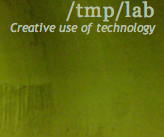Difference between revisions of "Interactive lasers"
From Tmplab
Samneurohack (talk | contribs) (→Goals) |
Samneurohack (talk | contribs) (→Goals) |
||
| Line 4: | Line 4: | ||
* The very fast and easy plan is to switch ilda scenes according to some inputs. You can use already made ilda files (see download section) in a SDcard plugged inside the laser fixture and use DMX protocol to switch. DMX usb cards are cheap, usually we use enttec ones. DMX controlled lasers are cheaper than | * The very fast and easy plan is to switch ilda scenes according to some inputs. You can use already made ilda files (see download section) in a SDcard plugged inside the laser fixture and use DMX protocol to switch. DMX usb cards are cheap, usually we use enttec ones. DMX controlled lasers are cheaper than | ||
| − | * If the plan is too draw live, it depends on the laser fixture DIY or | + | * If the plan is too draw live, it depends on the laser fixture DIY or commercial. Lot of possibilities depending on the number of colors, from using an arduino, a 5.1 USB soundcard upt to use commercially (opensource) cards using the standarts ilda connect ports. |
== Hardware == | == Hardware == | ||
Revision as of 15:46, 1 January 2015
Goals
Different levels of complexity are possible. Commercial lasers uses ilda files/connections to draw whatever you want, but you can build your own, see hardware section.
- The very fast and easy plan is to switch ilda scenes according to some inputs. You can use already made ilda files (see download section) in a SDcard plugged inside the laser fixture and use DMX protocol to switch. DMX usb cards are cheap, usually we use enttec ones. DMX controlled lasers are cheaper than
- If the plan is too draw live, it depends on the laser fixture DIY or commercial. Lot of possibilities depending on the number of colors, from using an arduino, a 5.1 USB soundcard upt to use commercially (opensource) cards using the standarts ilda connect ports.
Hardware
Obviously there is DIY Lasers and commercial ones and there is a bunch of cards integrating some DACs to talk to the laser fixture.
